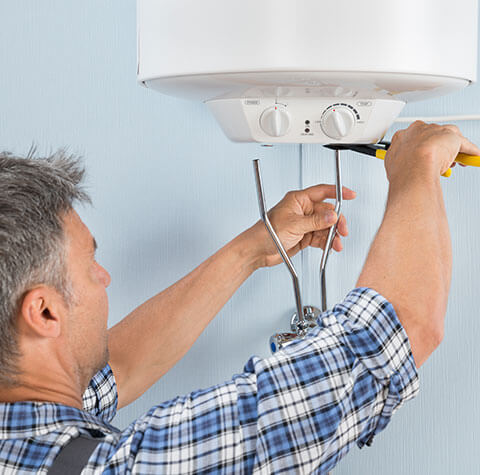The hot water tank in your home is primarily responsible for delivering safe hot water throughout your home. In most cases, the source of heating fuel can vary from natural gas to oil or even electricity. The appliance in your home uses the fuel source to heat the water and send to down the hot water lines to your faucets in your sinks and showers.
 The history of the heated water system dates back to London, England to 1868 where a painter named Benjamin Maughan invented the first instantaneous domestic water heater that did not use solid fuel named “the geyser” after an Icelandic gushing hot spring. The more traditional “tanked” system was developed around 1889 by Edwin Rudd in Pittsburgh, Pennsylvania and the company that keeps the Rudd name to this day.
The history of the heated water system dates back to London, England to 1868 where a painter named Benjamin Maughan invented the first instantaneous domestic water heater that did not use solid fuel named “the geyser” after an Icelandic gushing hot spring. The more traditional “tanked” system was developed around 1889 by Edwin Rudd in Pittsburgh, Pennsylvania and the company that keeps the Rudd name to this day.
In a “tanked” system household, the water is contained a cylindrical vessel or container that continuously heats the water to a set temperature where is it then ready to use once the demand is requested by a faucet in the home. The tanks are usually between 40 and 50 gallons with a burner rated at 34,000 to 40,000 DTU an hour. There are some higher efficiency tanks available as well for those keeping an eye on lower utility bills as well as being greener for the environment. The drain from a cost perspective comes from the fact that the water is being constantly heated even when there is no need for hot water at the time. Think of it along the lines of having hot water being made while you are at work and no one is home.
In 2015, as part of the National Appliance Energy Conservation Act, new minimum standards for efficiency of residential water heaters were set by the United States Department of Energy went into effect. This sets a 60% efficiency rating which represents a slight improvement from older tanked systems.
For the utility bill and environmentally conscience homeowner, a tankless system offers the best of both worlds. A safe hot water system that delivers on-demand water without the additional cost of heating water when it is not being requested. In a tankless system, the heater is usually turned off but is equipped with a flow sensor which activates it when water travels through them. Since there is no finite tank of hot water that can be drained, the heater supplies a continuous supply.
A few signs your current hot water system may be a failure and in need or repair or replacement include a general lack of hot water, popping or rumbling noises, cloudy water, rust in the water or on the tank itself, or water leaking from the tank onto the floor.
Whether your need is a tanked or tankless system, water heater repair, our experts at Ultimate Drain Cleaning and Service, LLC are ready to help get the job done right.




